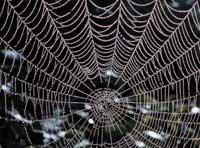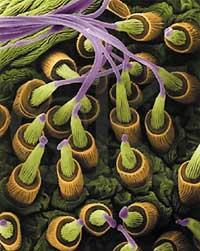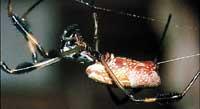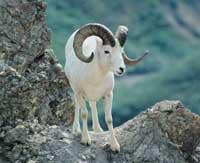The secret of silk

It is more resistant than steel itself, very flexible and 80 times thinner than human hair. It has been said that if it had the thickness of a pencil it could stop a Boeing 747 flying. The military has used it to make jackets against bullets and doctors to sew points in eye operations. This resistance has made it a small treasure of the technology industry.
In response to the high demand, the traditional industry has grown in silk worms for many years. Worms grow easily, but only produce silk at a given time of the life cycle, in the chrysalis phase, and it is expensive to get large quantities. For this reason, the farms have also tried to grow spiders. In short, spiders produce almost every day while the silk is bigger.
However, the results with spiders have always been unfortunate. Being solitary and territorial animals, they cannot grow in group. Moreover, they are cannibals, which greatly hinders the growth of spiders. In addition, spiders recycle the fabric produced by them: the silk that has become obsolete is eaten to take advantage of the protein content of the fiber. It is clear that the animal that destroys the produced silk is not suitable for industrial uses and have been put to think about biotechnological solutions.
Silk in goat milk


A biotechnology company in Montreal, for example, has achieved transgenic goats that produce silk. You just have to milk the goats to obtain unlimited silk proteins. But there is a problem: insects and spiders expel these silk proteins in the form of fiber, in the form of thread, but goats do not. Goats release proteins dissolved in milk, distorted, never in the form of fiber.
Therefore, the difficulty is now different. How to get all these proteins dissolved in the milk or in the water of the goats to organize properly and form resistant fibers? A new research has given solution to the problem. They have clarified how this fiber is produced in insects, that is, how proteins arrive since they are dissolved in water until they are fibers.
Insects are known to produce fiber at the time they launch out. The proteins called fibroins are dissolved in the water and are organized in the form of fibers as they leave the silky glands. Until now, it was thought that the silk was polymerized when coming into contact with the air. But it is not the cause of air, but the lack of water.
Appearance of silk proteins
The reason is in the peculiar structure of proteins. These proteins have hydrophobic aspects, that is, zones in which water repels or rejects. This makes them unstable in water. There is a serious problem for many proteins, but under certain conditions it can be an advantage. Depending on the environmental conditions, the proteins of the silk can adopt one form or another: when dissolved in the water they acquire a certain form, swimming in the water as small proteins; but when the water disappears, the proteins expose those areas that the water usually rejects, and acquire a totally different appearance, that is, a form of fiber.
Therefore, when spiders launch the solution of the silk proteins to the outside, proteins with water and modified structure, almost without water, are extracted, which retain each other as micelles, which are wound up and form an extremely solid fiber. The higher protein retention, the higher the fiber.

The secret is, therefore, in the structure of proteins. If they were completely weldable in the water, they would not have the possibility of changing appearance and creating structures of this type. But the proteins of silk, thanks to these characteristics, create a long and long spiral structure. That is, only when the water is removed.
Now scientists know what limits the formation of fiber, and it is clear what is the following objective: transgenic goats will have to achieve a good structuring of industrially produced silk. In this way, the generation in the laboratory of as many silks as you want and the design of synthetic fibres that improve the resistance of the silk will be achieved.
Buletina
Bidali zure helbide elektronikoa eta jaso asteroko buletina zure sarrera-ontzian











